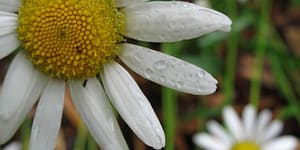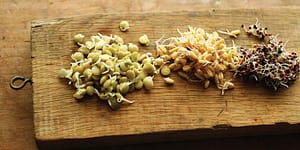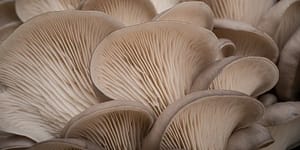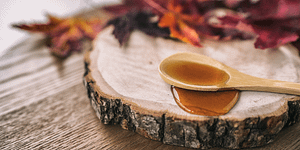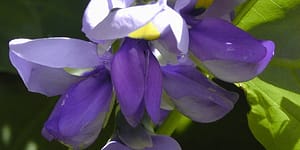Mesquite: Where There’s Smoke

Gary Paul Nabhan is an internationally celebrated nature writer, food and farming activist, and proponent of conserving the links between biodiversity and cultural diversity. He holds the W.K. Kellogg Endowed Chair in Sustainable Food Systems at the University of Arizona Southwest Center, where he works with students, faculty, and non-profits to build a more just, nutritious, sustainable, and climate-resilient foodshed spanning the US/Mexico border.
The following excerpt is from Gary’s book Mesquite. It has been adapted for the web.
These days, my wife, Laurus, and I happen to live in a small rural village called Patabutta, Arizona, on the upland bridge between the two biggest and boldest deserts of North America—the Sonoran and Chihuahuan—where mesquite savannas and grasslands form what I call Our Home on De-Range. On a clear day, we can see the pollution in the border towns, and it too carries the smoky fragrance of mesquite. Especially on cold winter mornings, we can see and smell plumes of mesquite smoke rising up from the makeshift chimneys, corrugated stovepipes, and grease-stained grills in the shantytowns, barrios, and colonias of Nogales, Sonora.
During the winter, mesquite warms our skin, our throats, and our bellies. It is the preferred firewood for fireplaces and barbecue pits all across the North American deserts.
Other than Laurus, the mesquite tree is the only other resident of Patabutta that I affectionately call “honey.” In the spring, mesquite’s fragrant flowers offer nectar to many kinds of bees, one of which then transforms it into a fragrant amber honey. Our friends Kara Schneider and Jaime de Zubeldia have kept some of their top-bar hives by the little pond on our property.
Their bee colonies are hidden away in the shade of the mesquite bosque just below our straw-bale house. The bees waggle-dance their way up from our pond, where they can drink year-round, and into our mesquite groves, hedgerows, orchard, and gardens, where they can collect nectar and pollen. Jaime and Kara kindly provide us with enough honey from their hives so that we can ferment enough mead to offer to the desert druids who hide out beneath each densely branched mesquite tree on our property.
That’s right: desert druids. While most of America is awash in Smurfs and Zombies these days, we prefer cohabiting with a band of desert druids. They are the guardians of the mesquite forest. They threaten to kick the butts of all bulldozer-driving, chain saw-wielding, herbicide-snorting nozzle-heads who senselessly try to mow down any of the mesquite trees in our valley.
There’s a big difference between giving a tree an annual haircut with pruning shears and slitting its trunk with an ax or a chainsaw. I usually do the pruning just before the pods come on in early summer, or again in late summer, just before a second flush of pods ripens in early fall. This is to allow us to offer a mesquite tree a full-body embrace when Laurus and I go out to gather the honey-colored pods from mesquite trees scattered all around Patabutta.
After we fondle all the foliage until the pods just fall off into our hands, we rest for a moment in postharvest bliss. We then dry the pods out in the sun or toast them in tumblers originally designed to roast chile peppers. The pods begin to blush after all this stimulation, their sweetness exuding from every cell. That’s when we know they are ready for consumption, or as we call it, “consummation.”
We grind them into a sweet but savory flour that we serve for breakfast in a variety of ways: tamales, panqueques, atoles, pinoles, moles, and Bulgin’ waffles. And when we serve our friends a plateful of such mesquite-laden morsels, they often eat them while sitting on our chairs constructed of mesquite trunks, before a 6-foot-long table of 2-inch-thick mesquite boards.
Recommended Reads
Recent Articles
Oxeye daisies are one of the most important plants for pollinators including beetles, ants, and moths that use oxeye daisies as a source of pollen and nectar. Instead of thinking about removing a plant like oxeye daisy, consider how you can improve the fertility and diversity of habitat resources in your home landscape, garden, or…
Read MoreWhat’s so great about oyster mushrooms? First, you can add them to the list of foods that can be grown indoors! They are tasty, easy to grow, multiply fast, and they love a variety of substrates, making oyster mushrooms the premium choice. The following is an excerpt from Fresh Food from Small Spaces by R. J.…
Read MoreThis long-lived perennial legume is used for forage and erosion control. Kudzu is edible with many medicinal uses and other applications. Pollinators of all kinds love its prodigious lavender blooms!
Read More



